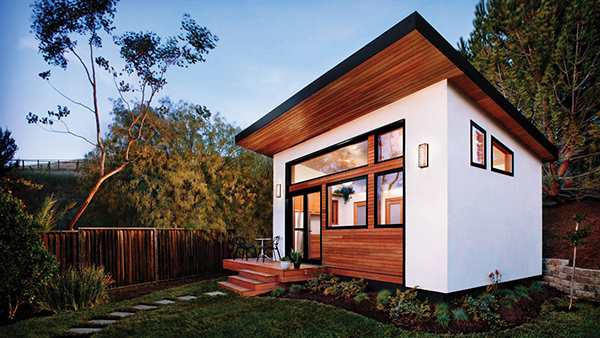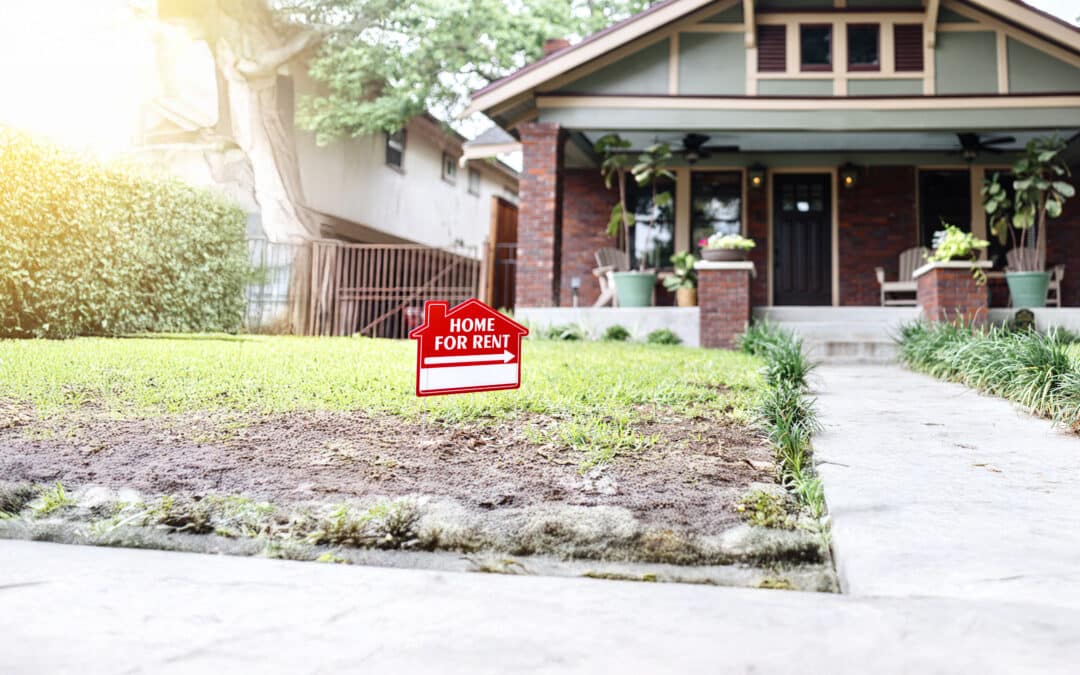Many experts will tell you that you determine your return on an investment property when you buy it, not when you sell it. You increase your profit by paying less for a home that nets you good rents, minimizing your financing costs and possibly negotiating a rebate from the listing agent. Some savvy speculators patiently look for hidden gold in oddball properties, but these homes are not always the easiest to find or finance.
Here’s what you need to know about buying unique investment properties, and the kinds of financing available for them.
Why Do Lenders Hate “Different” Properties?
If your “man cave” is really a cave, don’t expect mortgage lenders to love it. Kit homes, log homes, ranches, tiny homes, green homes and castles don’t get love from lenders because unique properties are a challenge to appraise. Mistakes when valuing property could be costly in the event of a foreclosure.
A much-cited Journal of Real Estate Finance and Economics study concluded that “properties that are more difficult to evaluate are less liquid,” which means unusual properties are generally harder to unload in a foreclosure sale.
Typical homes, on the other hand, are not that hard to evaluate. If a house in a tract of 100 virtually identical homes sells for $200,000, it’s fairly safe to assume that the neighboring homes are worth about $200,000 as well. But what about a nearby two-acre parcel with a manufactured home, a swimming pool and a couple of barns? That value is far less certain, so the property is less liquid.
The advantage for investors is that the “weird” property is likely to be discounted even if its rent is equal to that of the tract houses next door.
If you’re paying cash for a discounted unique home, it won’t matter that it’s an oddball. You win. If you’re financing with a mortgage, though, you’ll have to work a little harder.
Financing an Investment Property With Acreage
Homes in rural areas, and sometimes in high-end suburbs, often come with extensive acreage. In mortgage lending, “extensive acreage” usually refers to total acreage exceeding 10 acres. Even lots with fewer than 10 acres can be considered “extensive” when the acreage is much larger than what is normal for the area.
You can finance homes on large lots with traditional mortgages, but the entire land value may not count toward the property’s total acreage or value. A home with 20 acres, for example, may only get “credit” for 10 of them. This creates more difficulty for investors because investment property purchases usually include down payments of at least 20%, and capping the land value can push this requirement even higher.
Be sure to ask your real estate agent whether a property’s total acreage exceeds what is “normal” for the area to avoid ugly surprises.
The other option for large land tracts is a farm or agricultural loan. Expect to put at least 25% down. The Farm Credit System (Farmer Mac) is a government-sponsored enterprise like Fannie Mae and Freddie Mac, but it backs loans for residential and agricultural purchases in rural areas. You can find lenders in your area by accessing the Farm Credit System search function. Mortgage rates are only slightly higher than those of traditional home purchases.
Mortgages for Upcycled Houses
Homes constructed from recycled tires, hay bales and rammed earth are cool. Sadly, however, these eccentric building techniques are unlikely to win over a typical mortgage lender.
Most (if not all) mortgage lenders subscribe to guidelines such as Fannie Mae’s, which reads, “On a case-by-case basis, lenders must determine whether there is sufficient information to develop a reliable opinion of market value.”
As long as these properties are uncommon, assigning a value isn’t possible and neither is a standard mortgage.
You’ll have to resort to other options. For instance, you might be able to finance the lot without including the value of the improvements. The rest of your purchase price can come from an unsecured (personal) loan, a line of credit, or a loan against a different property. Understand that “improved land” loans come with significantly higher interest rates (about 2 percent higher than residential mortgage rates).
Mortgages for Log and Kit Homes
Log home financing can be super-easy or a complete headache, dependent on two factors — the home’s construction and the home’s location.
In areas where log or kit homes are typical, such as the Pacific Northwest, it’s easy for appraisers to establish their value.
If these homes are uncommon, however, assigning a value can challenge appraisers and mortgage lenders. When there are few comparable dwellings, the valuation is less accurate. Lenders typically reduce the home’s appraised value when underwriting, which results in a larger down payment for the buyer.
Kit homes may be disqualified for mortgage financing if they are not assembled by licensed contractors. If you can’t finance with a mortgage, the kit provider or contractor may finance you. Or you can try for a personal loan.
Mortgages for Mixed-Use Developments
Mixed-use projects are communities devoted to both residential and business activity. It isn’t always easy to finance homes in those buildings because commercial and residential lenders don’t tend to operate in the same space, and they have different underwriting guidelines.
A classic mixed-use project involves a multi-story building with commercial business on the ground level and living quarters on the higher floors. As long as the square footage of the commercial portion does not exceed 25 percent of the building’s entire square footage, you can get traditional mortgage financing from a variety of providers.
However, for a mixed-use building where commercial activities occupy more than 25 percent of the total space, you may be out of luck.
The one exception to this rule is for loans via the VA Loan Guaranty program. VA loans do not specify a specific limit for commercial space in a mixed-use building — only that the amount of commercial space be a “consideration.”
Mortgages for “Crazy” Floor Plans
For buildings with “interesting” architecture, insufficient amenities (one bathroom for five bedrooms?), or impractical layouts, finding fair market value can be challenging. That makes it hard to get them financed.
What’s considered crazy? Anything that reduces the home’s marketability in a way that’s hard to quantify. You can see that it’s wrong, but you can’t easily determine how wrong.
For example, how much cheaper should a home that requires guests to walk through the master bedroom in order to get to a bathroom be? What about a design that puts the kitchen and dining rooms on separate floors?
Fannie Mae’s underwriting guidelines state that an atypical or funky floor plan restricts “the market appeal for the property.” If a lender agrees to finance it, the value will probably be discounted, effectively increasing the down payment requirement for investors.
If you agree to purchase a home for $300,000, but the atypical floorplan lowers the home’s value to $250,000, a 20 percent down payment is no longer $60,000. It rises to $100,000 (20 percent of $250,000 plus $50,000 to erase the lower valuation).
Mortgages for Tiny Homes
These days, many municipalities are addressing their housing shortages by loosening home size and property density guidelines. This provides a great investment opportunity for those who want to buy and hold tiny rental units.
When a property is sufficiently small, it’s no longer considered “a house,” which means you can’t obtain a home loan for it. To qualify for mortgage financing, the minimum home size for a property is 400 square feet. The dwelling should also be on an approved foundation, taxed as real estate, and constructed according to local building codes.
If the dwelling is not considered real estate, you likely can’t give a mortgage for it. However, it’s possible that you’ll qualify for manufactured home financing via the FHA Title 1 or Title 2 programs. Talk to a mortgage lender to know your options but do not discount the tiny home trend.
Specialty Mortgage Cautions
When searching for special home financing, investors should understand that not all lenders are subject to the same consumer protection laws as traditional mortgage lenders.
Very small lenders, rural lenders and private lenders can charge higher fees. Owner financing can be very tricky. If you go into the weeds for your property financing, it’s probably a good idea to have a real estate attorney review your contract and loan documents before committing fully.
Real Estate Versus Chattel
Not all housing transactions are legally real estate purchases. Many non-traditional dwellings are considered personal property (chattel). In that case, you can skip many of the appraisal, title insurance, transfer taxes, and other closing costs.
This is important because the savings involved increase your bottom line.
Awkward Has Its Advantages
Why would anyone jump through all of these extra hoops to finance goofy homes? Because oddball is another word for opportunity.
There is less competition. The homes sell for less because there is a smaller pool of buyers. And studies show that renters, your customers, are less picky about quirky homes than buyers — they mainly want the right location and are willing to sacrifice to get it. Buying a weird home in the right location can be a very smart move.























0 Comments